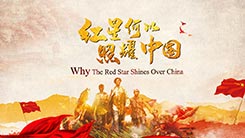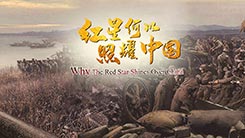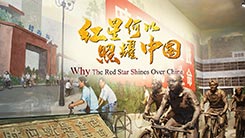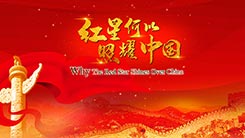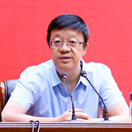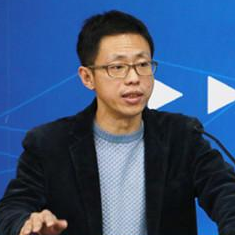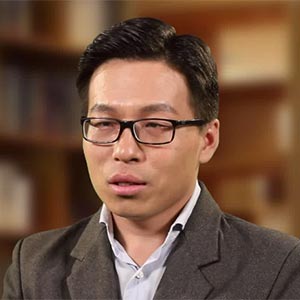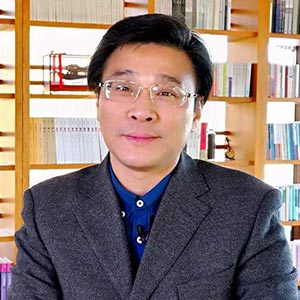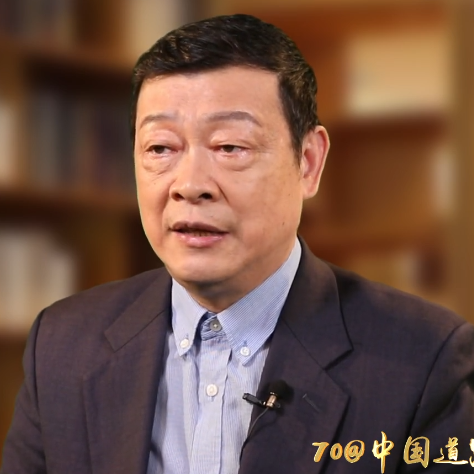為什麼是馬克思主義?為什麼是中國共産黨?
中華民族有著五千多年的文明發(fā)展史。
在漫長的歷史長河中,勤勞智慧的中國人民創(chuàng)造了燦爛的中華文明。
但從 1840年開始,西方帝國主義列強通過發(fā)動侵略戰(zhàn)爭,強迫中國割地、賠款。
中國人民生活在水深火熱之中,展現(xiàn)在中華民族面前的是一片瀕臨毀滅的悲慘黯淡的前景。
近代中國的仁人志士,為了捍衛(wèi)民族獨立和尊嚴,捍衛(wèi)中華文明,從未停止過英勇抗爭。
這期間發(fā)生了太平天國起義、洋務運動、戊戌維新運動、義和團運動。
但是,由於沒有找到科學的理論、正確的道路和可依靠的社會力量,這些鬥爭一次又一次地失敗了。
1911年 10月孫中山領導的辛亥革命,終於推翻了清王朝統(tǒng)治,建立了中華民國,結束了統(tǒng)治中國幾千年的封建帝制。
但辛亥革命並沒有改變中國人民被壓迫奴役的悲慘境遇。
以袁世凱為首的北洋軍閥竊取了辛亥革命的果實,中國陷入四分五裂的軍閥割據(jù)和軍閥混戰(zhàn)之中。
這期間,在中國的政治舞臺上出現(xiàn)過帝制復辟、議會制、多黨制、總統(tǒng)制等各種形式,各種政治勢力及其代表人物紛紛登場,舊中國的社會性質和中國人民的悲慘命運沒有改變。
歷史呼喚著真正能夠帶領中華民族實現(xiàn)偉大復興使命的承擔者,這個任務光榮地落到了先進生産力的代表 ——中國工人階級及其政黨的肩上。
面對辛亥革命後的社會現(xiàn)實,以陳獨秀和李大釗為代表的中國先進的知識分子毅然舉起民主與科學的旗幟,掀起了新文化運動。
新文化運動提倡民主和科學,打開了遏制新思想涌流的閘門,在中國社會掀起一股思想解放的潮流。
與此同時,1917年,列寧領導的布爾什維克黨發(fā)動了震撼世界的十月社會主義革命,在世界上建立了第一個社會主義國家。
在十月革命的推動下,各國共産黨紛紛建立,共産主義運動迅速擴展到全世界。
1919年3月,無産階級的國際性組織——共産國際成立。
這年5月 4日,北京學生 3000余人齊集天安門前舉行示威。
他們衝破反動軍警的阻撓,從四面八方匯聚到天安門前,舉行抗議集會,這就是震驚中外的五四運動。
陳獨秀、李大釗作為中國新文化運動的主要發(fā)起人,他們在1919年五四運動期間毅然選擇了馬克思主義和俄國十月革命道路,是中國共産黨的主要創(chuàng)始人。
在上海與北京黨組織的聯(lián)絡推動下,各地黨的早期組織紛紛建立起來。
1920年7月,一批留法的勤工儉學生在蒙達尼公學集會。
蔡和森在會上“主張激烈的革命,組織共産黨,實行無産階級專政,即仿傚俄國十月革命的方法”。
這年的8月,蔡和森在給毛澤東的信中提出“明目張膽正式成立一個中國共産黨”。
毛澤東回信稱:“你這封信見地極當,我沒有一個字不贊成。”“中國共産黨”的名字也由此而來。
1921年7月23日,中國共産黨第一次全國代表大會在上海法租界望志路106號舉行,在浙江嘉興南湖“紅船”上閉幕。
中國共産黨正式成立!
中國共産黨的誕生,是近代中國歷史發(fā)展的必然結果,也是中國人民在救亡圖存鬥爭中頑強求索的必然結果,也是中華民族在追求偉大復興道路上不斷覺醒的必然結果。
此後28年時間裏,經過艱苦卓絕的奮鬥以及人民的支援,中國共産黨成為中國的執(zhí)政黨。
時至今日,一百年間,中國共産黨帶領中國人民,深刻改變了近代以後中華民族發(fā)展的方向和進程,深刻改變了中國人民和中華民族的前途和命運,深刻改變了世界發(fā)展的趨勢和格局。
Why did We Choose Marxism? Why did the CPC Take Up the Mission?
The Chinese nation has a civilization that dates back more than 5,000 years.
During the long history, the diligent and intelligent Chinese people have created a splendid culture.
From 1840, however, the western imperialist powers launched a series of aggressive wars, and forced China to cede its territories and pay reparations.
The Chinese people were living in dire straits, and the Chinese nation facing tragic and bleak prospects was on the verge of destruction.
In modern times, people with lofty ideals had never stopped fighting bravely to defend the independence and dignity of the nation, and the Chinese civilization.
During that period, the Taiping Rebellion, the Westernization Movement, the Reform Movement of 1898, and the anti-western Boxer Rebellion broke out.
Due to a lack of scientific theory, correct path, and reliable social forces, these struggles failed time and time again.
In October 1911, the Xinhai Revolution led by Dr. Sun Yat-sen finally overthrew the Qing Dynasty and established the Republic of China, hence ending the autocratic monarchy that had ruled China for more than 2,000 years.
The Revolution, however, did not change the miserable plight of the Chinese people under oppression and suppression.
The Beiyang warlords headed by Yuan Shikai usurped what the Xinhai Revolution achieved, and China fell into a fragmented warlord regime and melee.
During this period, various political systems such as imperial restoration, parliamentary system, multi-party system, and presidential system stepped on the political arena of China. Many political forces and their representatives also came on stage. Nevertheless, neither the social nature of the old China nor the tragic fate of the Chinese people changed.
History called for those who could truly take up the mission to realize the great rejuvenation of the Chinese nation. This task fell gloriously on the shoulders of the representatives of advanced productive forces — the Chinese working class and its political party.
Facing the social reality after the Xinhai Revolution, China's outstanding intellectuals represented by ChenDuxiu and Li Dazhao resolutely raised high the banner of democracy and science, and kicked off the New Culture Movement.
Advocating the western ideas of science and democracy, the New Culture Movement lifted the restrictions on new thoughts and started an emancipation of minds in Chinese society.
Around the same time, in 1917, the Bolshevik Party led by Vladimir Lenin launched the October Socialist Revolution in Russia, which astonished the world. The first socialist country was then established.
Motivated by the October Revolution, the Communist Parties of various countries were founded one after another, and the communist movement rapidly spread across the whole world.
In March 1919, the Communist International — the international organization of the proletariat — was founded.
On May 4th of that year, more than 3,000 students from Beijing gathered at Tiananmen Square to hold a demonstration.
They broke through the obstructions of the reactionary military and assembled from all sides at Tiananmen Square to hold a protest rally. This was the May Fourth Movement that shocked the country and the world.
As the main initiators of the Chinese New Culture Movement, Chen Duxiu and Li Dazhao resolutely chose to follow the steps of Marxism and the October Revolution during the May Fourth Movement in 1919. They were also the main founders of the Communist Party of China (CPC).
Promoted by the party organizations in Beijing and Shanghai, early party organizations were set up one after another in the rest of the country.
In July 1920, a group of Chinese students who had been sent to study and work in France gathered at Montargis College.
At the meeting, Cai Hesen said, "We should imitate the Russian October Revolution to launch fierce revolution, organize the Communist Party, and implement the dictatorship of the proletariat."
In August of the same year, Cai Hesen proposed in a letter to Mao Zedong "to formally establish a Communist Party of China."
Mao Zedong wrote back, saying: "You are highly perceptive, and not a word do I disagree with in this letter." The name "Communist Party of China" was also first mentioned in the letter.
On July 23, 1921, the First National Congress of the CPC was held at No. 106 Wangzhi Road in the French Concession of Shanghai. It closed on the Red Boat on Nanhu Lake in Jiaxing, Zhejiang province.
The CPC was officially established!
The birth of the CPC is the inevitable result of the development of modern Chinese history, of the people's tenacious struggle for survival, and of the nation's pursuit of the great rejuvenation.
In the next 28 years, after arduous struggle and the support of the people, the CPC became the ruling party of China.
Over the past 100 years, the CPC has led the Chinese people to profoundly change the direction and process of contemporary China's development, the future and destiny of the nation, and the trend and pattern of world development.
《紅星何以照耀中國》 / 中國網(wǎng)出品
出品人 / 王曉輝
總監(jiān)製 / 楊新華
總策劃 / 蔡曉娟
執(zhí)行策劃 / 蔣新宇
專家顧問 / 陳述 中共中央黨校教授 陳中奎 中國人民解放軍國防大學副教授
導演 / 仇俊博
編導 / 申罡 時暢 郭澤涵 魯波 孔竟?jié)?/strong>
設計 / 顧榕楠
製作 / 馬躍
翻譯 / 汪瑋 李秀宇
攝影 / 陶世欣 毛歡東
後期 / 于舜源 傅華洋
